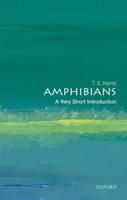Publisher's Synopsis
Excerpt from Entomology for Beginners: For the Use of Young Folks, Fruit-Growers, Farmers, and Gardeners
As a first book in entomology it is also designed to be an introduction to the author's Guide to the Study of In sects.
The classification presented is in accordance with recent studies and the conviction that certain of the lower so-called orders of insects, such as the Orthoptera, Pseudo neuroptera, are heterogeneous, unnatural groups, which for the sake of clearness and truth to nature should be broken up into distinct orders. The class of insects, there fore, is divided into sixteen orders instead of eight, as may be seen in tabular form on p. 56, and the usual succession of orders has been reversed, the book beginning with the lowest, the Wingless insects, and ending with the highest, the Hymenoptera. This order agrees with the probable mode of evolution of the class, and with the geological suc cession of insects, so far as we know it; insects like cock roaches, grasshoppers, etc., being the first to appear, those with a metamorphosis, as neuroptera, beetles, ?ies, moths, ants, and bees, succeeding them.
In 1863 the author proposed a new classification of insects, placing the Hymenoptera at the head of the insect-series, the Coleoptera having, because, perhaps, from being the favorites of collectors, been assigned this position. Since that time it has been gratifying to see that, at the present time, not only in the United States, but in England and on the Continent, the Hymenoptera by general consent crown the summit of the tree of insect life.
About the Publisher
Forgotten Books publishes hundreds of thousands of rare and classic books. Find more at www.forgottenbooks.com
This book is a reproduction of an important historical work. Forgotten Books uses state-of-the-art technology to digitally reconstruct the work, preserving the original format whilst repairing imperfections present in the aged copy. In rare cases, an imperfection in the original, such as a blemish or missing page, may be replicated in our edition. We do, however, repair the vast majority of imperfections successfully; any imperfections that remain are intentionally left to preserve the state of such historical works.









